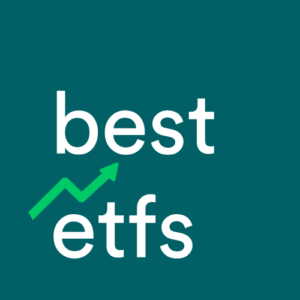Even if you’re professional investment analyst, formulating a share price forecast for a share like Macquarie Group Ltd (ASX:MQG) is never a certainty. That said, a thorough valuation will help you understand what’s going on under the hood.
Australia’s large bank shares make up over 40% of the share market, measured by the market capitalisation and inclusion in the S&P/ASX 200 index.
It’s easy to see why bank shares have been so popular since the early 1990s, when Australia had its last official recession — and mortgage interest rates were over 15%!
One great thing about banks is that, for the most part, they are ‘implicitly’ protected from complete financial collapse or bankruptcy because a bank going out of business would be a political nightmare. That said, as we’ve seen recently, shareholder returns are never guaranteed.
[ls_content_block id=”3301″]
Reversing the PE ratio
Chances are, if you have been actively investing in shares for more than a few years you will have heard about the PE ratio. The price-earnings ratio or ‘PER’ compares a company’s share price (P) to its most recent full-year earnings per share (E). If you bought a coffee shop for $100,000 and it made $10,000 of profit last year, that’s a price-earnings ratio of 10x ($100,000 / $10,000). ‘Earnings’ is just another word for profit. So, the PE ratio is basically saying ‘price-to-yearly-profit multiple’.
The PE ratio is a very simple tool but it’s not perfect so it should only be used with other techniques (see below) to back it up. That said, one of the simple ratio strategies even professional analysts will use to value a share is to compare the company’s PE ratio with its competitors to try to determine if the share is overvalued or undervalued. It’s akin to saying: ‘if all of the other banking sector stocks are priced at a PE of X, this one should be too’. We’ll go one step further than that in this article. We’ll apply the principle of mean reversion and multiply the profits per share (E) by the sector average PR ratio (E x sector PE) to calculate what an average company would be worth.
Using Macquarie Group Ltd’s share price today, plus the earnings per share data from its 2019 financial year, I calculate the company’s PE ratio to be 13.9x. This compares to the banking sector average of 10x.
Reversing the logic here, we can take the profits per share (EPS) ($6.949) and multiply it by the ‘mean average’ valuation for MQG. This results in a ‘sector-adjusted’ share valuation of $66.64.
[ls_content_block id=”3409″ para=”paragraphs”]
Wall Street’s oldest valuation model
A dividend discount model or DDM is a more robust way of valuing companies in the banking sector.
DDM valuation models are some of the oldest valuation models used on Wall Street and even here in Australia. A DDM model uses the most recent full year dividends (e.g. from 2019/2020) or forecast dividends for next year and then assumes the dividends remain consistent or grow slightly for the forecast period (e.g. 5 years or forever).
To keep it simple, I’ll assume last year’s annual dividend payments are consistent. Warning: last year’s dividends are not always a good input to a DDM because dividends are not guaranteed since things can change quickly inside a business — and in the stockmarket. So far in 2020, the Big Banks have been cutting or deferring their dividends.
In any case, using my DDM we will assume the dividend payment grows at a consistent rate in perpetuity (i.e. forever), for example, at a yearly rate between 1.5% and 3%.
Next, we have to pick a yearly ‘risk’ rate to discount the dividend payments back into today’s dollars. The higher the ‘risk’ rate, the lower the share price valuation.
I’ve used a blended rate for dividend growth, and a risk rate between 8% and 13%.
My DDM valuation of MQG shares is $78.79. The valuation compares to Macquarie Group Ltd’s share price of $96.92.
Summary
I think it goes without saying that these two models are only the starting point of the process for analysing and valuing a bank share like MQG. If I were looking at the shares and considering an investment, I’d want to know more about the bank’s growth strategy. Are the net interest margins holding up if they are pursuing more lending (i.e. interest income)? How are they dealing with regulation if they seek more non-interest income (fees from financial advice, investment management, etc.)?
Finally, it’s always important to make an assessment of the management team. For example, when we pulled data on Macquarie Group Ltd’s culture we found that it wasn’t a perfect 5/5. No company has a perfect cutlure, of course. However, culture is one thing we think about a lot when analysing companies to buy and hold over the very long-term (10+ years).
[ls_content_block id=”3302″ para=”paragraphs”]



